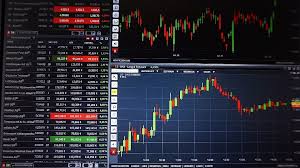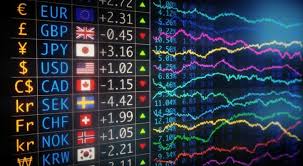Understanding Forex Trading Time Zones 1778139219

Forex trading operates 24 hours a day, allowing traders around the globe to execute trades at any time. However, understanding the significance of forex trading time zones Uganda Brokers and trading time zones is crucial for maximizing trading opportunities and profits. In this article, we will delve into the various trading sessions, their characteristics, and the strategies traders can employ to navigate the Forex market effectively.
Overview of Forex Trading Time Zones
The Forex market is divided into three major trading sessions: the Asian session, the European session, and the North American session. Each session has its own unique characteristics, including market volatility, trading volume, and the currencies that are most active. Understanding these distinctions can help traders choose the best time to enter and exit trades.
The Asian Session
The Asian trading session starts at 11 PM GMT and ends at 8 AM GMT. This session is often characterized by lower volatility compared to the other two sessions. It’s predominantly dominated by the Japanese yen, Australian dollar, and New Zealand dollar. Traders focusing on currency pairs that include these currencies can find good opportunities during this time.
One of the key features of the Asian session is the overlap with the European session, which begins shortly thereafter. During this overlap, increased trading volume and volatility can lead to substantial trading opportunities. Many traders use this time to analyze economic reports released in Asia, which can also influence trading decisions.

The European Session
The European trading session opens at 8 AM GMT and concludes at 5 PM GMT. This session is known for being the most volatile, as it accounts for a significant portion of daily Forex trading volume. Major currency pairs such as EUR/USD, GBP/USD, and USD/CHF become particularly active in this session.
Economic news from the Eurozone, the British pound, and other European economies can significantly impact currency prices. Traders should keep an eye on announcements from the European Central Bank (ECB) and other important economic indicators, as these can lead to rapid market movement.
The North American Session
The North American session begins at 1 PM GMT and ends at 10 PM GMT. Similar to the European session, it is marked by increased volatility due to the large volume of trading taking place. The release of important economic indicators like Non-Farm Payrolls (NFP) and GDP data can lead to swift changes in the market.
This session is primarily influenced by the US dollar. Currency pairs involving the USD, such as USD/CAD and USD/JPY, are actively traded during this time. Many traders employ strategies based on the correlations between the US and European markets during this session’s overlap, which can provide a strategic advantage.
Understanding Market Overlaps

Market overlaps can present significant opportunities for Forex traders. The overlaps occur when two trading sessions are active simultaneously, leading to higher liquidity and volatility. The most notable overlap occurs between the European and North American sessions, from 1 PM to 5 PM GMT. Traders should be aware that both major sessions running concurrently can lead to exciting trading prospects.
Choosing the Right Time to Trade
Knowing which trading session to focus on will largely depend on your trading style and the currency pairs you prefer. Scalpers, for example, might favor the European and North American sessions due to their high volatility. Swing traders, on the other hand, may opt for the Asian session when they prefer a slower pace to analyze price movements before making decisions.
Moreover, different currency pairs can behave differently based on the time of day. Understanding these patterns can lead to more informed trading decisions. Conducting thorough research and keeping a trading journal can help a trader analyze their performance according to different time zones and sessions.
Tips for Trading Across Time Zones
- Stay Informed: Keep up to date with economic news and reports that might affect the currencies you trade.
- Plan Your Trading Sessions: Decide ahead of time when you will trade based on your availability and the volatility of the sessions.
- Use Technology: Consider trading platforms that allow for automated trading. They can execute trades based on conditions you set, regardless of your time zone.
- Understand Your Limits: Recognize that trading during high volatility increases risk. Be prepared for price spikes and drops.
Conclusion
Understanding Forex trading time zones is essential for any trader looking to maximize their potential in the market. By recognizing the differences between the Asian, European, and North American sessions, traders can formulate effective strategies tailored to their approach. Whether one chooses to focus on volatility during the European session or the quieter aspects of the Asian session, knowing when to trade can greatly influence success in Forex trading.
Incorporating time zone awareness into your trading strategy might provide a significant edge in a notoriously volatile market. With the right techniques and understanding of each session’s features, traders can enhance their decision-making process and potentially improve their trading outcomes.




